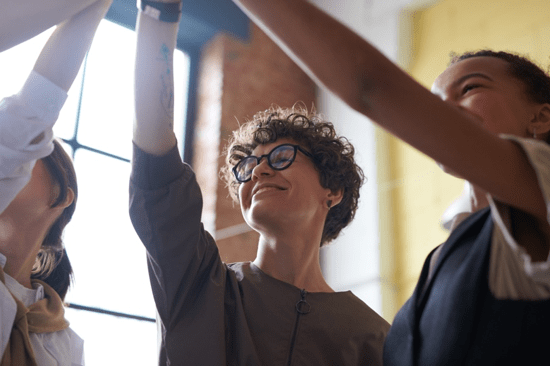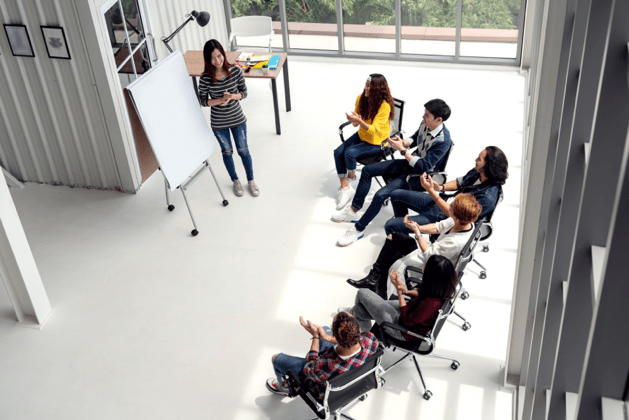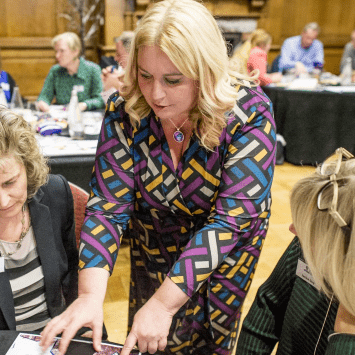Posted in Blog, Facilitation, Virtual Facilitation by Jo North
How to Facilitate Sessions for Culturally Diverse Groups of People at Work
I’m often asked for tips on how to facilitate culturally diverse groups in workshops and design sprints.
Diversity Matters
Diversity is not just a good thing; it’s essential for creative thinking. Teams with diverse cultural backgrounds bring different perspectives, ideas, and solutions to the table.
Experience and Expertise
I have facilitated sessions with thousands of people from all around the world, often with people who come together from different countries and cultures for workshops. These sessions include, amongst others:
- High performance remote team working
- Innovation and design thinking sprints
- Creative and technical solutions to win contracts worth millions of dollars
- Developing competitive edge through advanced customer experience
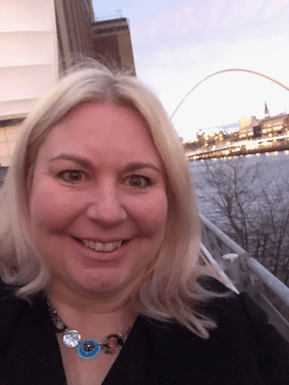
Virtual and Face-to-Face Workshops
People will often fly into an accessible transport hub, we will use the conference facilities at a local airport hotel, and after the session and post-event networking, people fly back to their respective countries.
I also facilitate scores of online workshops and sprints with people from all over the world coming together to collaborate, innovate and engage in knowledge exchange activities.
Here are my top tips to help you to facilitate culturally diverse groups with success.
Use Facilitation Fundamentals
From my experience the success factors for facilitating diverse, multi-cultural groups are not very different from working with people with similar backgrounds and locations. My main piece of advice is that facilitation great practice are even more important when you work with a culturally diverse group of delegates. Here’s a detailed article on How to Be a Great Facilitator.
Role of the Facilitator
Most people in business do have the insight, understanding and emotional intelligence to appreciate that their colleagues from different geographies may have a different set of expectations, customs and practices. The role of the facilitator is to support the creation of cohesion and synergy for the group. It’s also to role-model respect and space for individual differences and preferences. The facilitator needs to ensure that people who aren’t from the local or majority culture can participate fully and be heard.
Some Factors to Consider When Facilitating Culturally Diverse Groups
Some key factors to consider when facilitating a culturally diverse group of people include the following.
Challenging and Being Challenged
Cultural differences with regard to authority, challenging and being challenged. In some cultures, saying “I disagree” may be viewed as aggressive. In others, it may be a welcome invitation for constructive debate.
Cognitive Style Preferences
As you would for any group, consider and cater to different cognitive style preferences. For example, for structure versus flexibility, and analytical versus intuitive approaches.
Perspectives on Different Behaviors
Perspectives on different behaviors. For example, the importance (or lack of) of punctuality; one person talking at a time; staying on task; checking phones or emails when in session.
Expectations of Working Patterns
Different working hours, length of business days, breaks. Also how these might affect peoples’ energy in the workshop.
Reduce Language Barriers
Consider Different Levels of Language Comprehension and Fluency
Varying levels of understanding and speaking the language used in the session. Go further than you normally would to provide written content and visuals.
Some people process written language more easily than the spoken word.
Use images. Slow down your speech, without sounding patronizing. Make the most of online tools such as closed captioning.
I worked with a large international group of people online recently. Before the event, I circulated a glossary of key terms and a ‘cheat sheet’ of main takeaways from the session.
Ways of Doing Business
Your diverse participants may have different expectations when it comes to how to do business. For some cultures it is essential to socialize and build relationships first. For others it’s more important to start tasks and projects as quickly as possible.
Each learning context must be adapted to suit the needs of intercultural teams. This includes understanding their prior knowledge, social skills, and group processes.
Invite guest speakers who can offer a unique perspective on topics relevant to diverse backgrounds.
The role of the facilitator is to support the creation of cohesion and synergy for the group whilst also respecting and making space for individual differences and preferences. Click To Tweet
Diverse Cultures Exist in Local Teams Too
Each one of the items above also applies to teams from the same organization who work at the same location. The differences sometimes become more obvious in separately located groups, that’s all.
Be open-minded, facilitate with heightened emotional intelligence, and anticipate positive energy and outcomes. These approaches will help you to generate a self-fulfilling prophecy.
Important Facilitation Considerations
The other key piece of advice is to do your homework well in advance of the event. Make sure that you are crystal clear on how any of your delegates prefer to work. Understand any specific needs that they may have.
Examples include:
- Making sure that you provide the opportunity for people of some faiths to pray at certain times
- Providing appropriate food and drink refreshments. A group of delegates I worked with came to the UK from Malaysia. They strongly disliked our British cold sandwich at lunchtime approach. Participants felt much more at home when some hot food was provided. Everyone else said they preferred the hot food over the cold when it arrived too! It turned out to be a nice way of bringing the whole group together over lunchtime. Also be mindful of particular religious or other dietary food requirements.
- Consider any clothing conventions and be respectful of those.
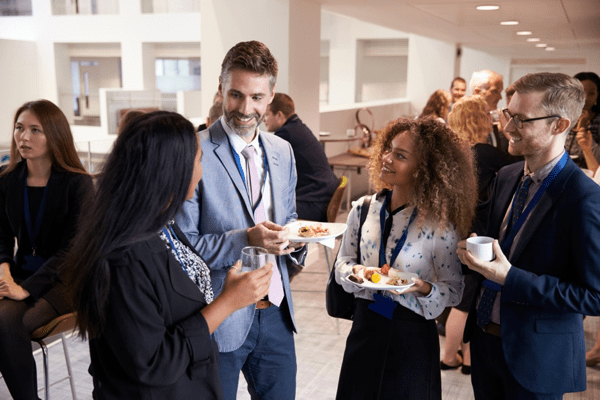
By learning as much as you can in advance, you can adjust your facilitation approach appropriately. You can also help participants to make the most of a terrific and exciting opportunity to work with a diverse talent pool of people.
Facilitation Tips for Working with Culturally Diverse Groups
Whilst it’s important to understand and be mindful of cultural differences, it doesn’t become a bigger challenge or issue than it really is.
Wherever I have worked, I have found that people are people. We have more that connects us than things that separate us.
It’s also super important not to stereotype anyone based on anything: not just culture, but gender, age, appearance and so on. Every person is unique.
My recommendation is that you facilitate even more mindfully and with some adjustments to ensure that you accommodate everyone as much as is reasonably practical.
Build in time for icebreakers and relationship building, as well as task-focused activities. You might find my article Do people behave differently when they are in groups? Insights into group dynamics for facilitators helpful, too. If you’d like some ideas for energizers, download my free Outdoor Energisers for Workshops resource.
Set Expectations Upfront
When it comes to differing prefernces with regard to timings, structure and etiquette (e.g. using phones, talking when others are speaking), make expectations clear right at the start of the meeting.
My tried and tested method for doing this is to propose a written ‘agreement’, the rules of engagement for a successful and productive session.
Ask the group if they are happy to commit to sticking to it to get the most done in the time available.
Everyone I have ever asked so far has said yes, and usually stuck to it!
I do ask delegates (as I usually do) to let me know if they are expecting an urgent call or email. If so, they receive a virtual ‘pass’ from the group to check their phone and step outside to make or receive any urgent calls.

Working in a Second Language Can Be Tiring and Challenging
Quite often, I experience working with delegates who are super-articulate and fluent in English even though it’s not their native language. Other delegates may find listening to, working in and speaking in English as a non-native language much more challenging. It can also be mentally tiring for them. For that reason, I make doubly sure that I offer delegates optional written and visual information to complement my verbal communications when I am working with international groups.
How to Facilitate People with Different Views on Challenge
When it comes to facilitating people with differing cultural views on disagreement and challenge, explain that for the session it is an important part of the solution development process.
Position the activity as a fun, entertaining (and therefore non-threatening) part of the day.
My creative techniques toolkit includes activities such as Provocation, which I’ve described below. Including approaches that are deliberately designed to get people focussed on knocking ideas down, so that they can collaborate to build those ideas up again, can be a positive, productive and enjoyable exercise.
Collective Ownership of Ideas
Emphasize that the objective of debate is to focus on the ideas and potential solutions that the group has collectively generated so far. This ensures that challenge will have a collective rather than personal focus.
Use Breakout Groups
One very simple way to support collaboration of diverse groups is to use small breakout groups, threes or pairs (depending on your numbers). Participants often feel more comfortable discussing in smaller groups than debating in plenary.
People in general often feel more comfortable discussing in smaller groups than debating in plenary. Click To Tweet
Creative Technique: Provocation Activity
The Provocation Activity is a great lateral thinking technique for getting delegates to come up with more extraordinary ideas. Creative Provocation is associated with Edward de Bono who popularized it.
In advance of the workshop, prepare some statements, relevant to the subject the event is focusing on, that are wrong, unreasonable or downright impossible. For example, if you’re into construction or building materials, tourism development or even confectionery manufacturing:
“Invent a new tourist attraction made of chocolate in the middle of the desert.”
De Bono recommends that a good proportion of your provocations should be completely unusable. If you make “doable” statements, the technique won’t stretch your thinking as much.
How to Use the Provocation Activity
In the workshop itself, ask delegates to take a statement and imagine the possibilities, and even develop a potential storyline.
Examples of imagined possibilities are:
- A new form of delicious, unmeltable chocolate could be produced.
- Incredible ways of keeping chocolate super-cool in the desert could be designed.
- Sand mixed with chocolate might create a super strong new building material.
- Challenge tourists to eat the visitor attraction before it melts.
These sorts of ideas aren’t as far out as it might seem at first, especially once they have been dialled back. On a sort-of related theme, Ski Dubai is the first indoor ski resort in the Middle East. The next generation of the Swedish Ice Hotel, ICEHOTEL 365 is a permanent structure that is cooled by solar panels during the summer months. The original Ice Hotel is temporary and rebuilt every winter.
How the Provocation Activity Works
The provocation activity makes sure that delegates will break free of fixed thinking patterns. They will need to suspend their judgment and use the unusual concept to get more and better ideas.
Provocation statements take you outside your usual thinking patterns to a fresh, new place. Once you’re at that new place, it’s then up to you to adapt your new thinking to reach where you want to be.
For this to work well, make sure your statement is as impossible as possible!
Stay away from ‘safe’ deliverable ideas.
I’ve seen some marketing agencies use this technique to stretch their thinking, before toning it down again and adapting their ideas to become workable solutions.
Groups also really enjoy this technique once they get into the swing of using it.
Round Up: How to Facilitate Culturally Diverse Workshops
Facilitating culturally diverse groups in sprints and workshops is a complex task, but the good news is that it brings opportunities for better outcomes and creative thinking.
The first step to effective facilitation involves creating a safe space where open dialogue is encouraged. Team members with diverse backgrounds—spanning different cultures, ethnic groups, and even different languages—can actively participate and share different perspectives. Cultural competence is essential here, going beyond mere cultural awareness to develop a set of behaviors that make everyone feel included.
Language barriers require special attention. The language skills of facilitation practitioners can make a significant difference, providing contextual information that enriches the learning environment. Small groups are often an effective way to foster active participation and new thoughts, allowing for a more tailored learning context. Within these small groups, the unique perspective of each participant contributes to better understanding and new knowledge.
Diverse teams benefit from collaborative systems that support group processes and strong relationships, both vital for conflict resolution and community development. Guest speakers who bring in a unique perspective from different parts of the world can enrich the experience. Overall, this practical guide aims to equip you with simple ways to handle the challenges and reap the benefits of diversity in group work.
Working in a Diverse Team Can Bring Out the Best in Everyone
I’ve had so much fun and learned so much by facilitating workshops for culturally diverse groups. The diversity actually seems to bring out the best in everyone, and it’s wonderful to see people collaborating to achieve a shared goal.
I hope that these tips and techniques help you, and I’d also love to hear about any tools and approaches that you use too to ensure that everyone is equally included and engaged in your innovation process. I would also love to help you with facilitation for your diverse team. Please do get in touch with me here.
When we facilitate, we have an awesome opportunity to help our delegates to have a great day at work, achieve really valuable, innovative outputs and build a sense of community, if only for a day. I feel so lucky to be able to do what I do for a living!
